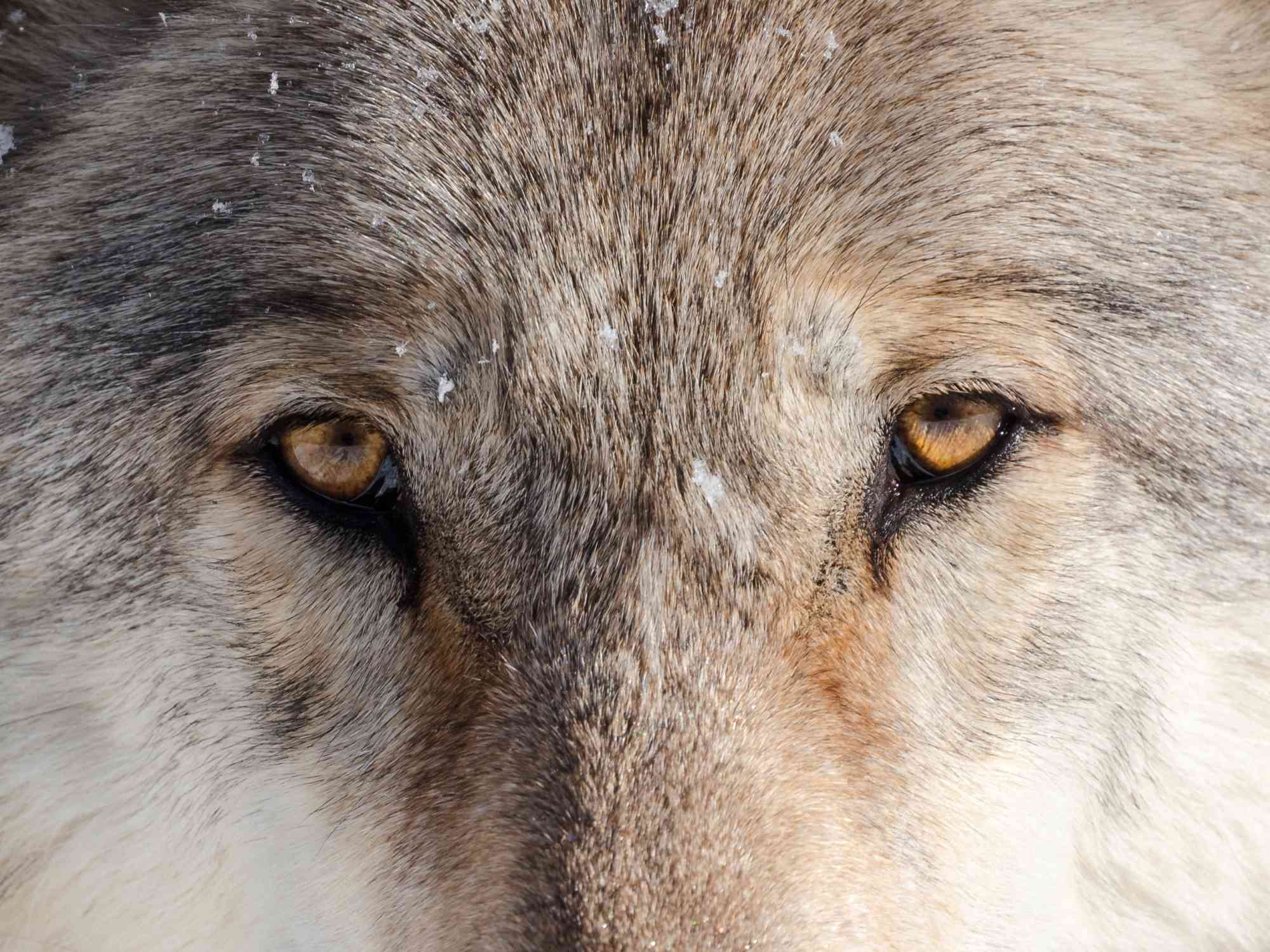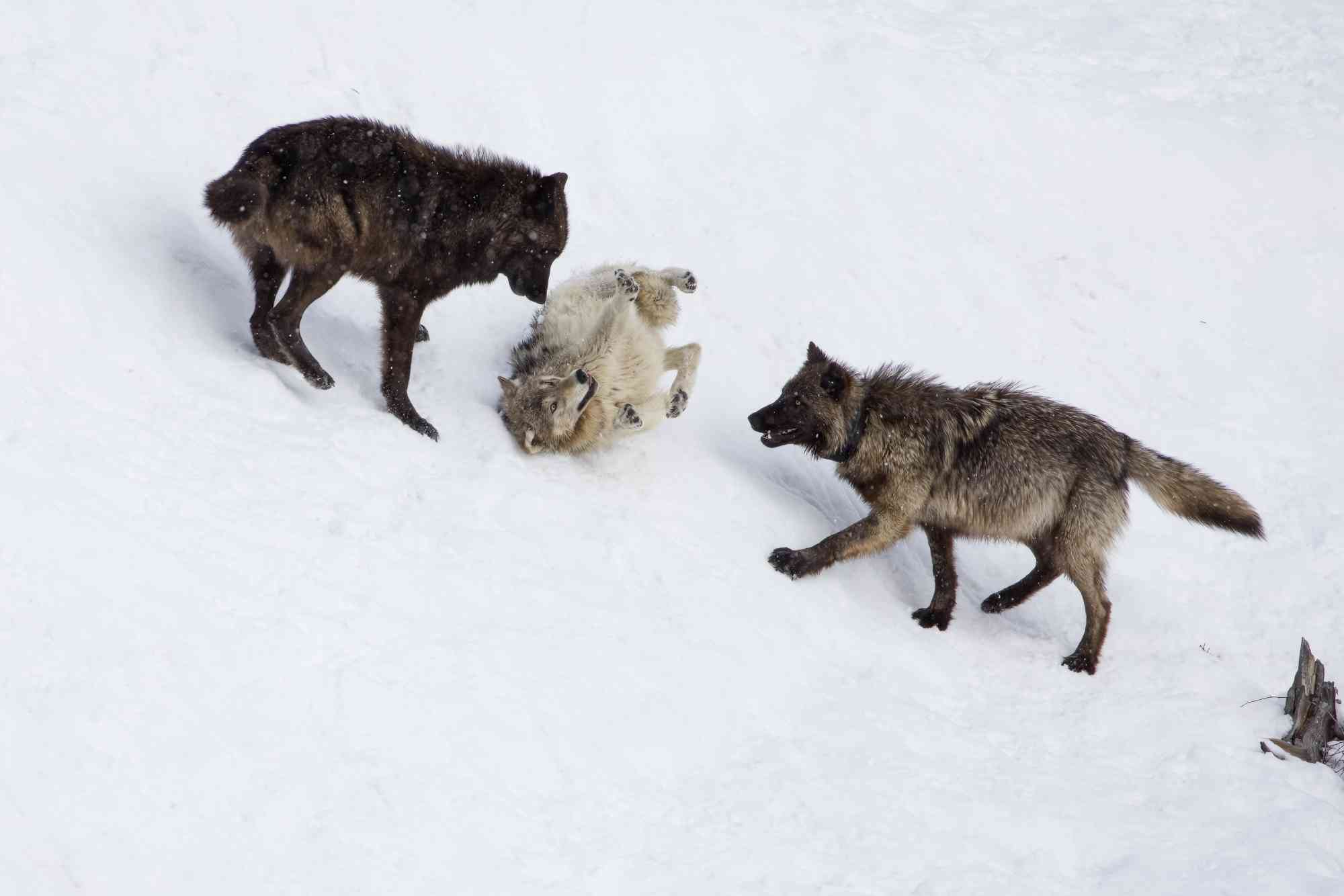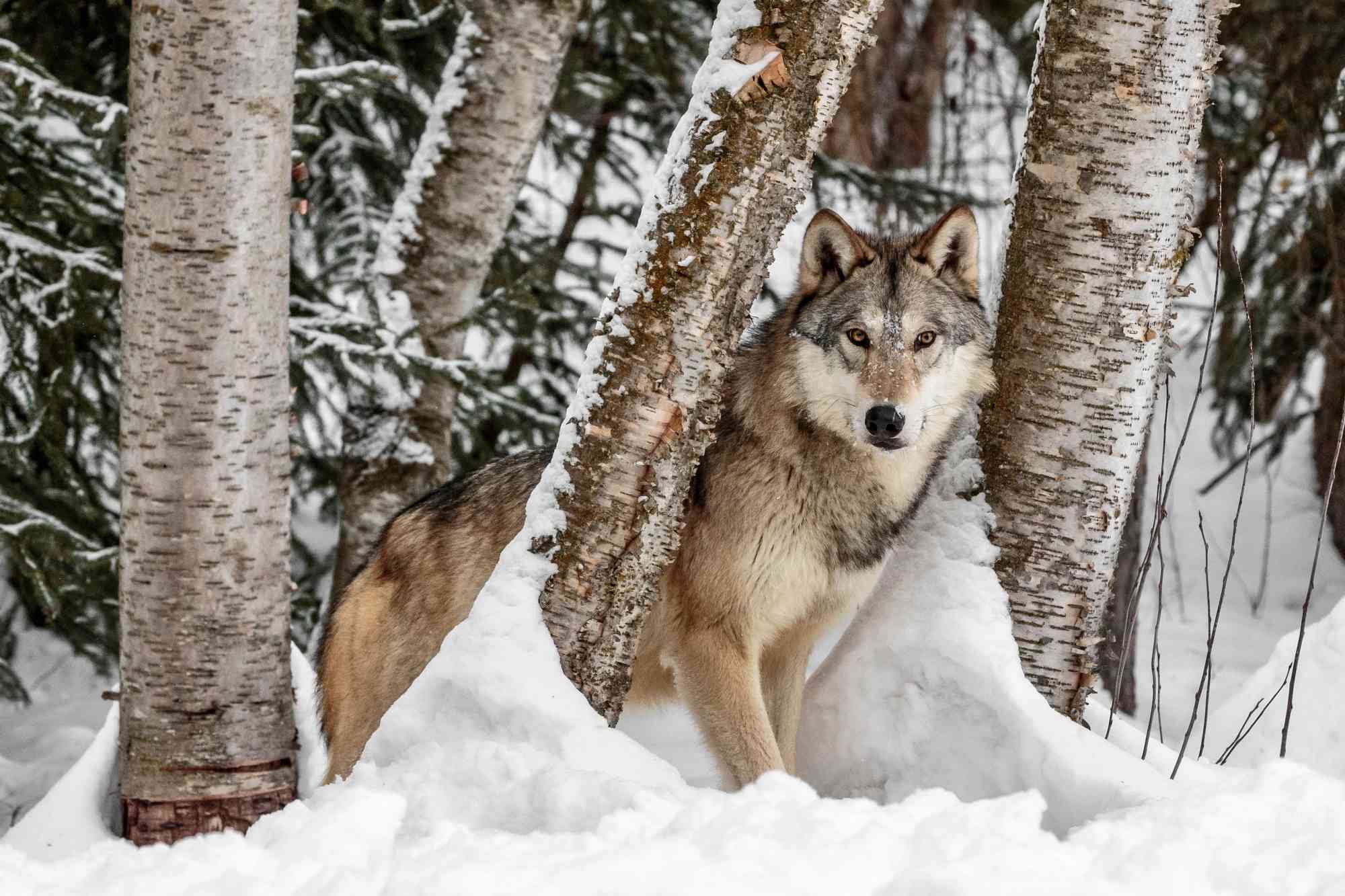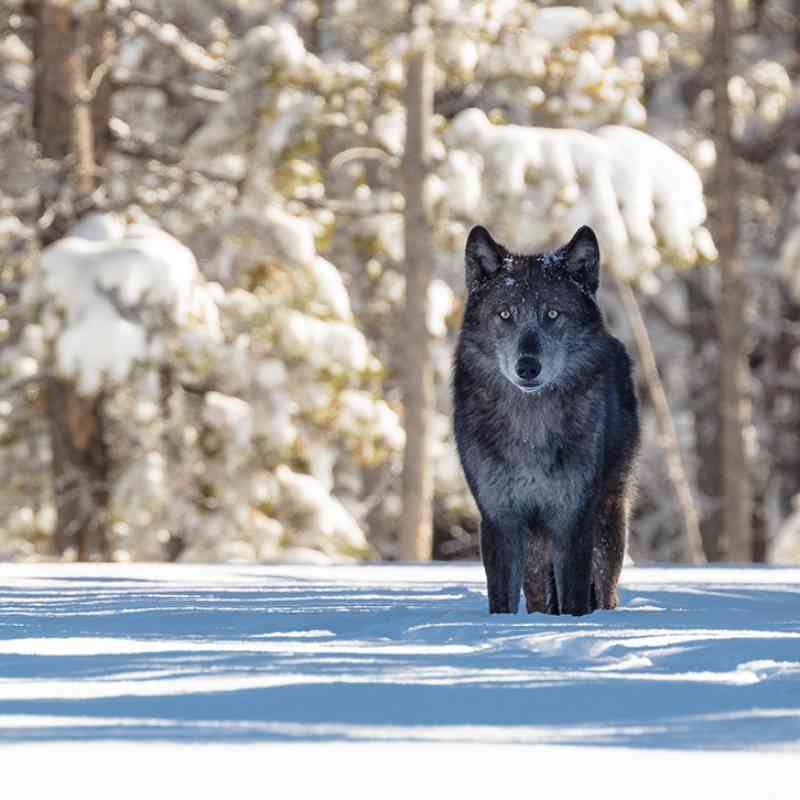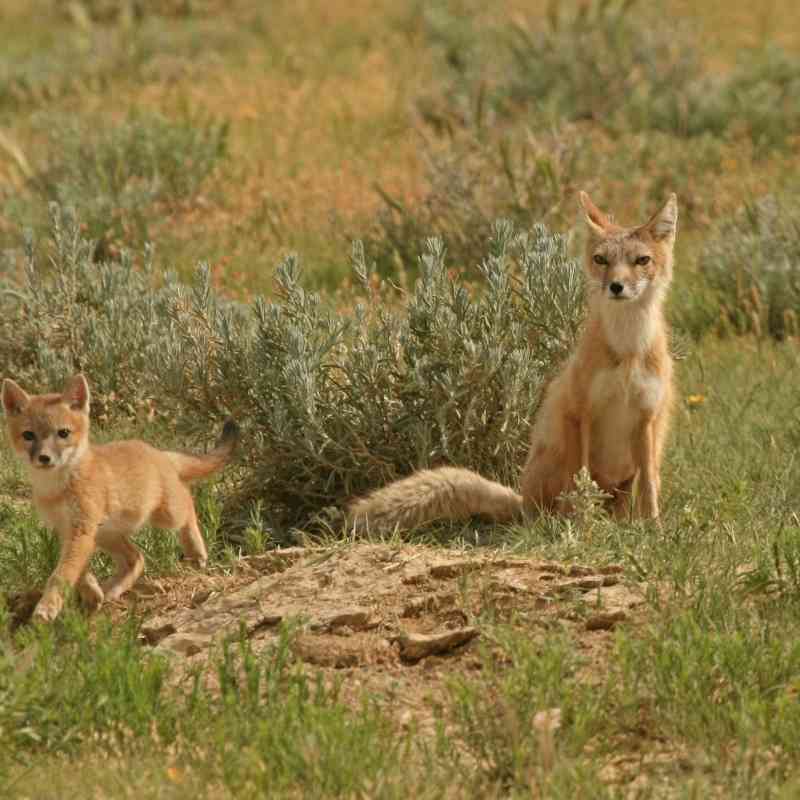Wolves roamed the North American landscape for thousands of years, sharing the land with Indigenous peoples who first lived on these lands. With the arrival of colonizers, wolves’ primary prey species were over-hunted, causing wolves to resort to hunting livestock. Based on myths and prejudices fueled by stories handed down over generations by colonizers, the gray wolf was demonized and villainized, and became subject to bounties encouraging their annihilation. By the mid-twentieth century, they were nearly eradicated from the United States and were listed as endangered under the Endangered Species Act in 1974.
The U.S. Fish and Wildlife Service is responsible, based on the best available science, for listing animals to be protected under the ESA. When an animal is listed, it is classified as endangered, which means the species is in danger of extinction, or as threatened, which means the species is at risk of becoming endangered. In 1978, the FWS issued a rule reclassifying the gray wolf as threatened in Minnesota and endangered across the rest of the lower 48. In the decades following, the gray wolf’s story in the U.S. has been interspersed with legal battles over federal protections, as FWS has acted uniquely with wolves, stripping protections from them long before they are recovered.
-
1995: FWS reintroduced wolves into Yellowstone National Park and remote areas in central Idaho, which allowed biodiversity to rebound, creating a “trophic cascade” in which the presence of wolves kept grazing herbivore and smaller predator populations in check. This reintroduction is today celebrated as a conservation success story.
-
2003: FWS issued a rule creating three “distinct population segments” for the gray wolf across the lower 48:
-
Eastern – which includes Minnesota wolves in the Great Lakes region
-
Western — which includes wolves in Montana, Idaho and Wyoming in the Northern Rockies region
-
Southwestern
-
The rule also reclassified the gray wolf from endangered to threatened in the Eastern and Western populations. The Southwestern population retained its classification as endangered. Following this rule, Defenders and its allies filed a lawsuit contesting it as unlawful under the ESA, and two courts agreed.
-
2008: FWS removed ESA protections from the Northern Rockies population, giving states and Tribes authority over wolf management. Defenders again went to court and successfully argued for full federal protections for gray wolves in this region.
-
2009: Issuing yet another rule, FWS sought to remove ESA protections from the Northern Rockies population of wolves, with the exception of Wyoming. At this time, Wyoming had been excluded from the Northern Rockies population because the state lacked adequate regulatory mechanisms to preserve its population without federal oversight. Defenders again challenged this decision to strip protections and the court sided with Defenders.
-
2011: In an effort to overturn the science that court decisions had validated on numerous occasions, Congress reinstated FWS’s delisting decision using a tactic known as a “rider,” or provision, within appropriations legislation. This action marked the first and only time Congress has removed a species from the Endangered Species List.
-
2012: FWS issued a rule removing the gray wolf population in Wyoming from ESA protections. Although a federal district court invalidated this rule, it was reinstated in 2017 by the D.C. Court of Appeals. Wolves in Wyoming today remain delisted as part of the Northern Rockies population.
-
2017-2022: During the Trump administration, FWS finalized a rule completely stripping gray wolves of ESA protections, alleging that the species had successfully recovered, despite the lack of scientific evidence supporting that decision. In response, Defenders and its allies went to court again to fight the decision. In February 2022, a judge sided with Defenders and ESA protections for the gray wolf were restored in the contiguous U.S., with the exception of the Northern Rockies population.
Despite monumental progress, gray wolves have yet to re-establish sustainable populations in much of the available habitat in the continental U.S. The gray wolf today is listed as endangered in the Lower 48, threatened in Minnesota and is not listed in Montana, Idaho and Wyoming and portions of Washington, Oregon and Utah.
Despite being home to prime wolf habitat, the Northern Rocky Mountain states have continuously displayed their intolerance toward gray wolves, which is why federal protections need to be restored in the region. Montana and Idaho have 1,087 and 1,337 gray wolves respectively, while Wyoming has an estimated 162 wolves. In 2023, Idaho issued a wolf management plan that calls for a reduction of its population to about 500, while Montana’s draft wolf management plan seeks to reduce the current population by up to 60%.
Wolves are not only a fabled animal, but a keystone species, responsible for balancing ecosystems wherever they are found. They delight our imaginations, and they are nature’s stewards. For their story to continue, they need and deserve full federal ESA protections. We have the power to weave their story with ours and create a coexistence story for all time, we just must be willing to write it.
Author

Maggie Dewane
Maggie is a communications strategist, writer, and filmmaker who has traveled to all seven continents to understand climate change, conservation, and how both impact people
comments
Wildlife & Wild Places

